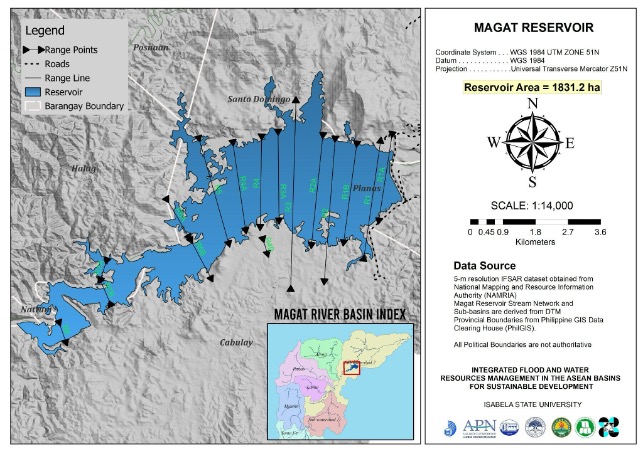VOLUME 17 (Supplement)

SciEnggJ 17 (Supplement) 551-557
available online: 31 December 2024
DOI: https://doi.org/10.54645/202417SupIRP-52
*Corresponding author
Email Address: lhan_1023@yahoo.com
Date received: 26 February 2024
Date revised: 20 September 2024
Date accepted: 21 September 2024
ARTICLE
Bridging borders for sustainable river basin management: Lessons from the Cagayan River Basin
2National Irrigation Administration, Magat River Integrated Irrigation
System-Dam and Reservoir Division, Ramon, Isabela 3319
Philippines
3Kyoto University, Japan
4Vietnamese German University, Vietnam
The Cagayan River Basin is one of the 18 major river basins in the Philippines. These basins are considered the lifeblood and driver of the Philippine economy thus need to be managed sustainably following an integrated river basin management approach to address several concerns related to watershed conservation, flood mitigation, secure clean water supply and irrigation development. In 2018, a cooperative research project amongst Philippines, Vietnam and Japan was established aimed at developing innovative approaches and techniques in integrated flood, sediment, and water resources management for sustainable development in ASEAN river basins. This paper highlights results of said collaborative studies on impacts of climate change and human activities using the SWAT model and projected that climate change and land use changes will significantly reduce water resources during dry years leading to droughts and increase of sediment inflow during wet years. A bathymetric survey in the Magat dam was conducted to validate the extent of sedimentation in the reservoir. Further, the rainfall-runoff-inundation (RRI) model was locally optimized as a decision support tool for flood inundation forecast and upgrading dam discharge protocol during extreme rainfall events.
© 2025 SciEnggJ
Philippine-American Academy of Science and Engineering